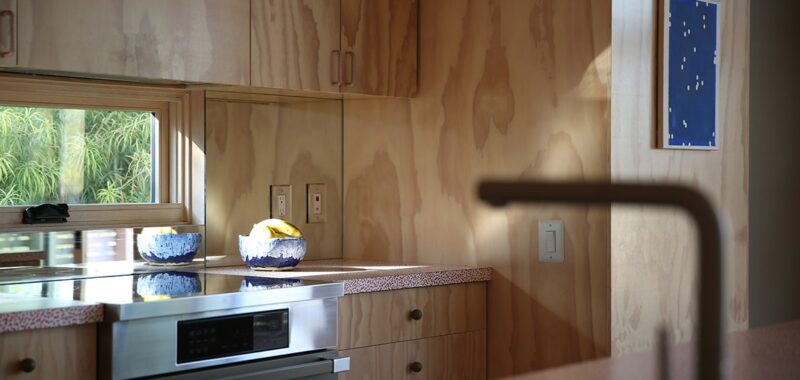Kitchen technology is evolving apace, with AI and other innovations pushing products ever closer to Jetsons territory. But some of the hottest kitchen trends right now have a distinctly vintage feel, from archival tile colors to retro flooring and the return of the breakfast bar. We asked some busy architects and designers what trends they’ve spotted so far in 2024.
Checkered Past: Linoleum Is Back
Really? Really. Although it’s the stuff of throwback Instagram accounts like Cheap Old Houses (@cheapoldhouses) or South Philly Time Capsules (@s.philly.time.capsules), linoleum never actually went away. And there’s a good reason grandma loved it: It’s durable, easy to clean, and offers plenty of options in the way of color. Designer Leah Ring says that her LA-based firm, Another Human, has deployed linoleum in a range of eye-catching hues to great effect. “I like to ease clients into this,” she says, noting that recently she’s noticed an appetite for bold color. “On our recent projects, clients are really willing to take some swings in the kitchen.” Another Human has made use of linoleum in several kitchens recently. “You don’t hear a ton about linoleum lately, and I know it became like a dirty word, but it actually has its advantages,” says Ring, who put purple linoleum flooring with a green cap in a recent project. “[The kitchen] is still in essence a private part of the home instead of more public-facing. Clients say ‘I’m going to spend the time here with this tile that makes me really happy,’” she says. And best of all, true linoleum is a green option: Though it has been overshadowed by—and is often confused with—vinyl flooring (think peel-and-stick products from your local superstore), linoleum is made from a mixture of linseed oil, tree resin, ground limestone, sawdust, and pigments; is biodegradable; and can be recycled.
Cooking (Without) Gas: Induction Cooktops
“The kitchen is the place where people want to see fire,” says Isaac Resnikoff of Project Room in Los Angeles. As an avid cook, he sympathizes with clients’ desire to be face to face with the elements in culinary settings. But in the interest of decarbonization, Resnikoff—who lives in a net-zero home himself—advocates for embracing an induction cooktop. “Having cooked on an induction stove for four years now, I would never go back,” he says. (He has a Dacor with a custom color front.) And there’s a bigger strategy at play: It’s rare to find a client who has an emotional attachment to a certain type of washer/dryer the way they do to gas stoves, so the cooktop can be the “gateway” appliance for taking a home in a greener direction. “Once you get over the hump of the gas range, then you can decarbonize everything,” he says. “It’s faster and more powerful, and since the surface itself doesn’t get hot, you can literally wrap towels around a pot as you’re deep-frying,” which over time mitigates the need for deep cleans.
Built-in Bars
Built-in breakfast bars and pass-through islands also rank among the kitchen trends with throwback appeal. Though they may have a certain retro (or Tiki, depending on the context) charm, they’re also getting renewed attention as methods for crafting partial barriers between kitchens and living spaces. Ring of Another Human says, “[The kitchen] is a place where people spend time. In bigger homes, we put a lot of thought and effort into opening up the kitchen to the rest of the house and creating sight lines through to other rooms. A big island for people to hang out at makes sense because it ends up being the heart of the home.” A surface to eat or cook on allows designers to provide useful space and connect the kitchen to other living spaces in one deft move.

